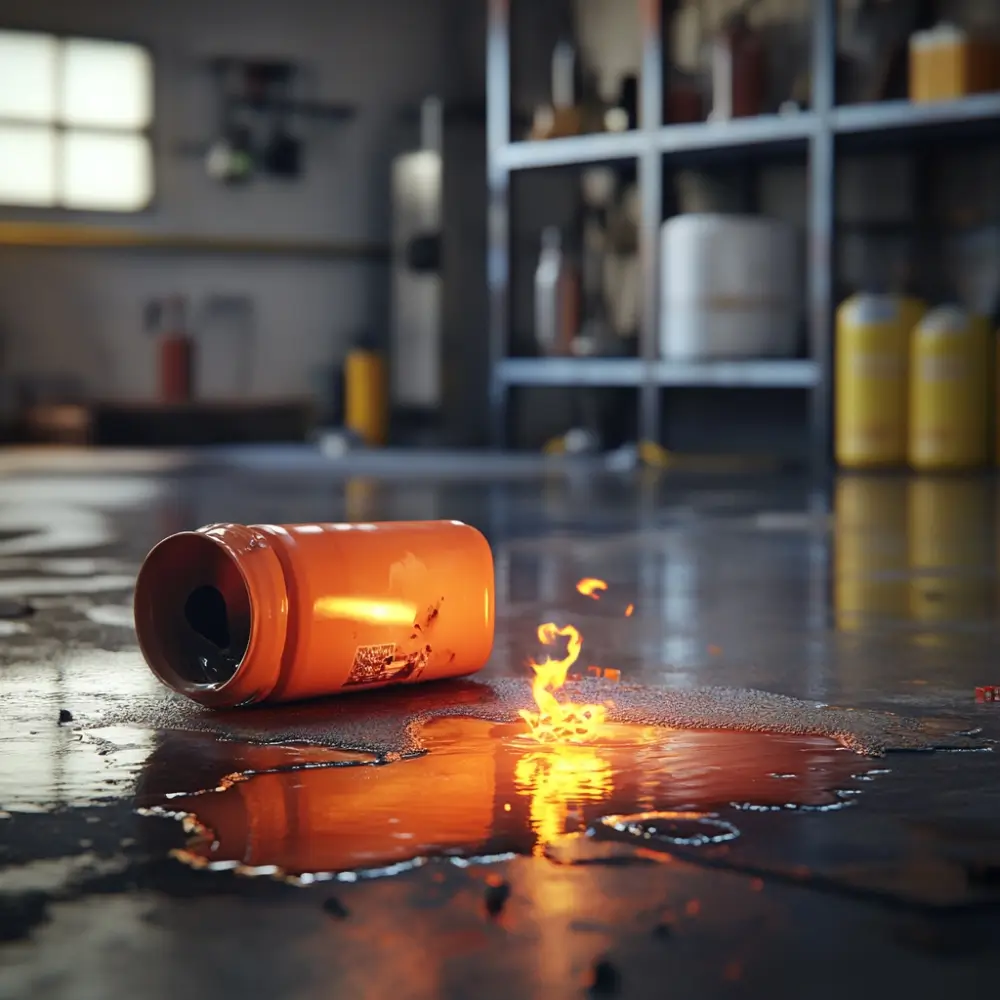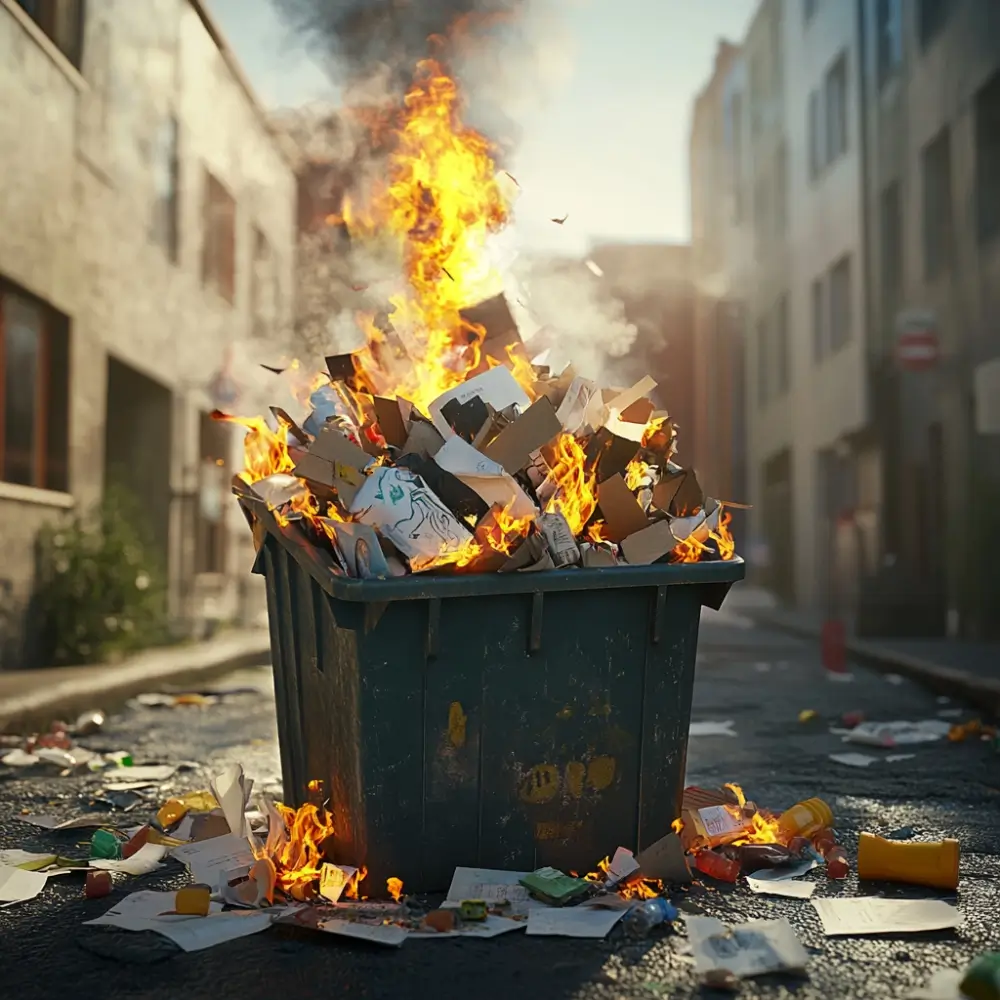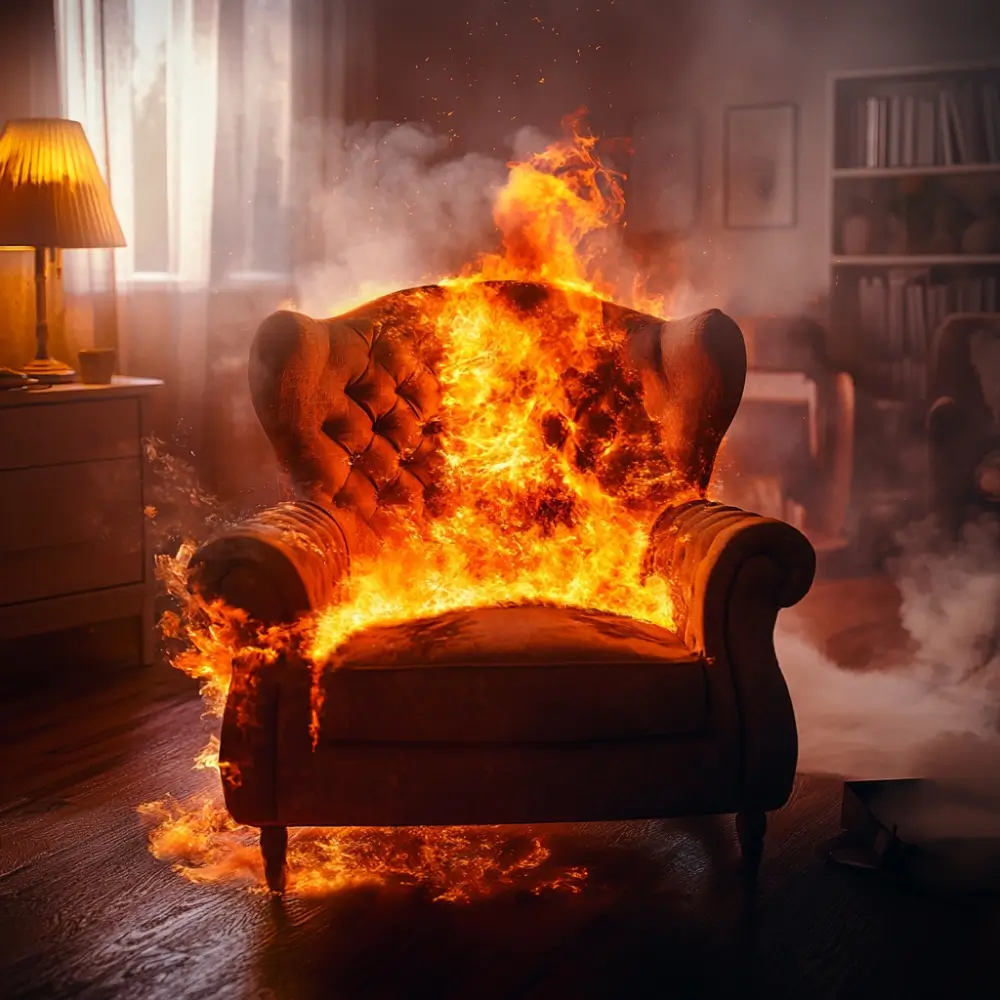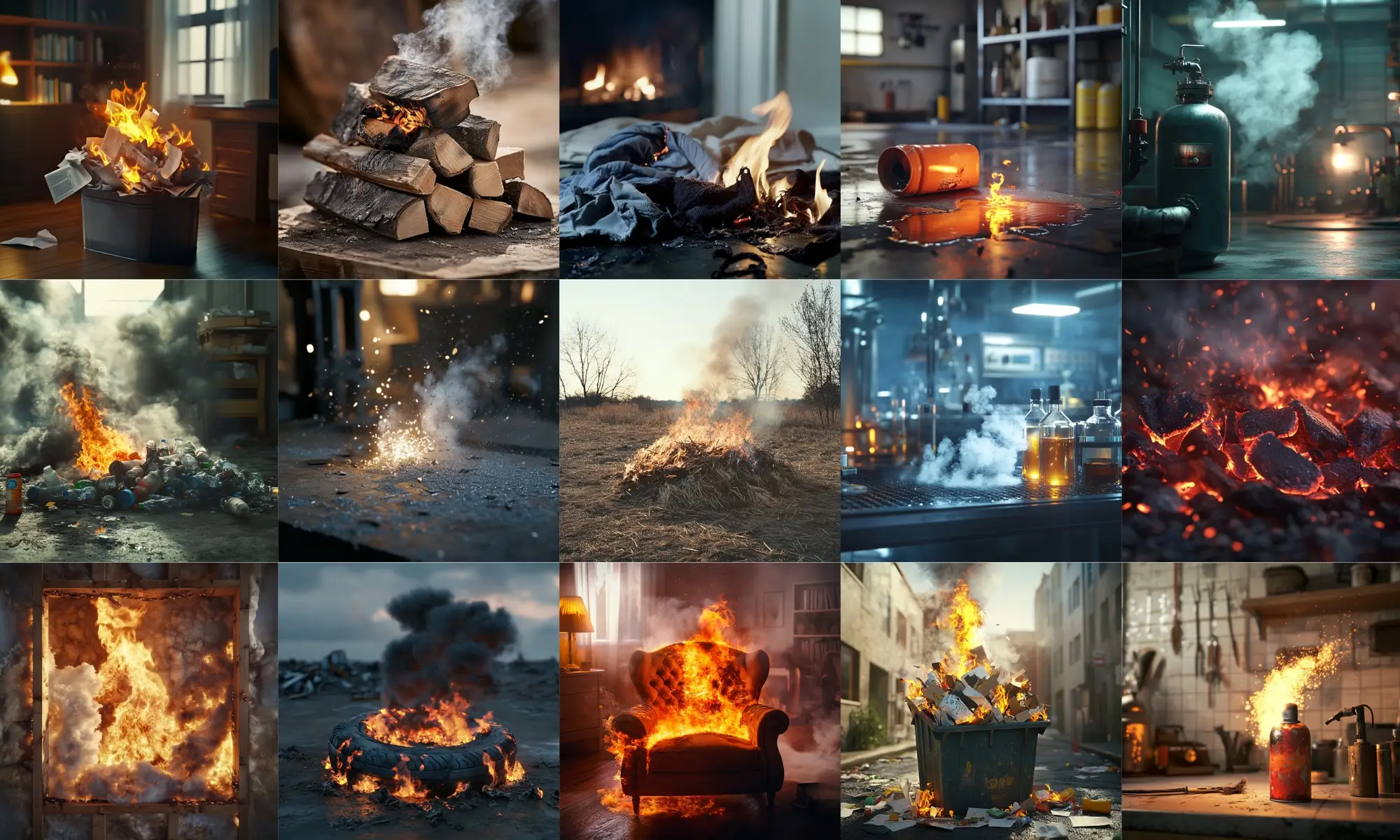Fire has been both a tool and a threat throughout human history. While it powers our homes, industries, and daily lives, it can also cause devastating damage when safety is overlooked. At the heart of many fire incidents lie combustible materials—substances that can ignite and sustain burning when exposed to heat, flame, or sparks.
Combustible materials are everywhere, from common household items like paper and furniture to industrial substances like chemicals and gases. Recognizing these materials and understanding their behavior in a fire is essential for creating safer environments at home, in the workplace, and in public spaces.
In this comprehensive guide, we’ll explore combustible materials, examine their key characteristics, and present 15 common examples with detailed fire risks. We’ll also cover essential safety rules to help you handle and store these materials responsibly—because awareness and prevention are the first steps toward fire safety.
What are Combustible Materials?
Combustible materials can catch fire and burn when exposed to heat, flame, or a spark under the right conditions. These materials don’t necessarily ignite instantly, but they can sustain combustion once they reach a certain temperature, known as the ignition point or kindling temperature.
Combustible materials are commonly found in homes, workplaces, and industrial settings, and they vary widely in form, from solids like wood and paper to liquids like gasoline and even gases like propane. Unlike flammable materials, which ignite very easily at low temperatures, combustible materials may require more heat to start burning but still pose serious fire risks when proper precautions aren’t taken.
Understanding which materials are combustible is critical for fire safety planning, storage protocols, and emergency preparedness.
Key Characteristics of Combustible Materials
Combustible materials share several defining traits that determine their behavior in a fire. Here are the key characteristics:
- Ignition Temperature: They require a specific temperature (higher than flammable materials) to ignite, known as the ignition point or kindling temperature.
- Ability to Sustain Fire: Once ignited, they can continue burning without needing an external flame.
- Heat and Smoke Generation: Combustible materials often release a large amount of heat and thick smoke, which may be toxic depending on the substance.
- Physical State: They can be solids (e.g., wood, paper), liquids (e.g., oil, kerosene), or gases (e.g., propane), each with different combustion behaviors.
- Surface Area Sensitivity: Materials in powder, dust, or shredded form (e.g., metal dust, paper scraps) ignite faster due to increased surface area.
- Burning Rate: They may burn slowly compared to flammable materials but can still contribute significantly to fire spread if not controlled.
- Storage Sensitivity: Improper storage—such as near heat sources or in confined spaces—can increase the risk of ignition and fire escalation.
- Combustion Byproducts: Some produce toxic gases (like carbon monoxide, hydrogen cyanide, or dioxins) when burned, posing health hazards.
- Common Occurrence: Found in daily-use items, building materials, furnishings, and industrial chemicals, making them a widespread fire risk.
15 Different Combustible Materials Examples
Combustible materials can ignite or burn, typically producing heat or light. Examples include:
1. Wood

Wood is one of the most common combustible materials found in construction, furniture, and fuel. Its organic composition—rich in cellulose, hemicellulose, and lignin—makes it highly susceptible to ignition. Once burning, wood can produce glowing embers that retain heat for a long time, increasing the risk of rekindling and fire spread.
Fire Risk:
- Easily ignites when dry
- Sustains burning over time
- Embers can spread fire to nearby materials
- Structural wood can collapse and worsen fire damage
2. Paper

Paper products like newspapers, books, packaging, and cardboard are extremely flammable due to their thin, dry, and porous nature. They absorb heat quickly and combust almost instantly. Once ignited, paper can burn fast and light enough to be carried by air currents, spreading flames to distant locations.
Fire Risk:
- Ignites very quickly
- Lightweight particles can fly and ignite other materials
- Often stored in large quantities, increasing fire load
- Fast-burning, causing sudden flame spread
3. Clothing

Clothing presents a direct personal fire risk because it is worn close to the skin. Natural fabrics such as cotton and wool catch fire easily and burn quickly, while synthetic materials like polyester and nylon melt when exposed to heat, sticking to the skin and causing severe burns.
Fire Risk:
- Cotton and wool ignite and burn rapidly
- Synthetics melt and cause deep skin burns
- Clothing fires can lead to serious or fatal injuries
- Common in domestic incidents like cooking or open flames
4. Flammable Liquids

Flammable liquids, including gasoline, alcohol, paint thinners, and oils, are dangerous because they emit vapors that can ignite even at low temperatures. These vapors mix with air and can catch fire from a small spark. The actual liquid doesn’t burn; it’s the vapor above it that poses the danger.
Fire Risk:
- Vapors are invisible and extremely flammable
- Can result in flash fires or explosions
- Spread easily over surfaces, intensifying the blaze
- Require careful handling, storage, and ventilation
5. Gases

Gases such as propane, methane, butane, and hydrogen are highly combustible and can create dangerous situations if leaked into confined spaces. These gases disperse rapidly and can form explosive mixtures with air. A single spark is enough to cause a devastating fire or explosion.
Fire Risk:
- Extremely flammable even in small amounts
- Leaks may go unnoticed until ignition
- Can lead to catastrophic explosions
- Require leak detection systems and safe containment
6. Plastics

Various types of plastic, such as PVC (polyvinyl chloride), polyethylene, and polystyrene, are combustible and can burn intensely when exposed to heat. While plastic fires may not always start easily, once ignited, they can spread rapidly and release highly toxic fumes like dioxins, hydrogen chloride, and carbon monoxide. These emissions pose severe health hazards, particularly in enclosed spaces.
Fire Risk:
- Can ignite and burn rapidly under heat
- Produces dense, toxic smoke and harmful gases
- Fumes may be fatal when inhaled
- Common in residential and industrial fire incidents
7. Certain Types of Metals

Metals are generally considered non-combustible, but some—such as magnesium, titanium, sodium, potassium, lithium, and aluminum dust—are highly reactive and can burn under specific conditions. Finely powdered or shaved metals have a larger surface area, making them more prone to ignition and even explosive combustion in the presence of sparks or friction.
Fire Risk:
- Metal powders and shavings ignite more easily
- Can burn at extremely high temperatures
- Often resistant to traditional fire suppression methods
- Risk of flash fires or explosions in workshops or labs
8. Organic Materials

Dry organic matter like leaves, grass, hay, straw, peat, and similar vegetation is highly flammable. These materials can catch fire from even small ignition sources such as a cigarette or a spark. In dry and windy conditions, they can contribute to the rapid spread of wildfires, especially in rural or forested areas.
Fire Risk:
- Ignites quickly when dry
- Burns rapidly and may spread uncontrollably
- Major contributor to wildfires
- Often found in agricultural and natural environments
9. Certain Chemicals

Combustible chemicals—such as some fertilizers, solvents, and industrial cleaners—can ignite under the right conditions. Many are reactive and can produce dangerous gases or cause explosions if mixed with incompatible substances. Improper storage or usage increases the risk of chemical fires, especially in manufacturing, laboratories, or storage facilities.
Fire Risk:
- Vapors or residues can be flammable
- Can react with other chemicals violently
- May produce toxic or corrosive gases
- Require proper labeling, handling, and storage procedures
10. Coal and Charcoal

Coal and charcoal are carbon-rich materials commonly used as fuel. They ignite relatively easily when exposed to sustained heat and produce a steady, high-temperature flame. However, when burned in enclosed or poorly ventilated areas, they can emit carbon monoxide—a colorless, odorless, and potentially lethal gas.
Fire Risk:
- Can smolder and reignite without visible flames
- Produce high heat and glowing embers
- Emit carbon monoxide if ventilation is poor
- Frequently involved in barbecue and indoor heating accidents
11. Rubber

Rubber, both natural and synthetic, is commonly found in tires, hoses, belts, and footwear. While rubber typically requires higher temperatures to ignite, once it catches fire, it burns intensely and releases thick, black smoke filled with toxic chemicals such as carbon monoxide and sulfur compounds. These fires are difficult to extinguish and pose serious health risks.
Fire Risk:
- Requires high heat to ignite
- Burns extremely hot and slowly
- Produces dense, toxic black smoke
- Common in vehicle and industrial fires
12. Insulation

Insulation materials like polystyrene, polyurethane foam, and fiberglass are used for thermal efficiency in buildings. While some are treated to be fire-resistant, many types can still catch fire under high heat. Once burning, they can emit toxic fumes and contribute significantly to the spread of fire within walls or ceilings.
Fire Risk:
- Can ignite under sustained heat
- May produce toxic gases such as hydrogen cyanide
- Can promote hidden fire spread within walls
- Fire-retardant treatments may degrade over time
13. Household Waste

Common household waste often contains combustible items such as food scraps, paper, cardboard, and plastic packaging. These materials, when improperly discarded or exposed to a heat source, can ignite and cause trash fires, especially in waste bins, dumpsters, or landfills.
Fire Risk:
- Contains a mixture of highly flammable materials
- Fires can start from discarded matches or embers
- Smoke can be toxic depending on waste contents
- Can spread quickly in bins or outdoor containers
14. Furniture

Furniture made of wood, foam padding, and synthetic fabrics can be extremely combustible. Once ignited, upholstered items in particular burn quickly and release a large amount of heat and toxic smoke. Older furniture is especially hazardous if it lacks fire-retardant treatments now standard in modern products.
Fire Risk:
- Flammable components like foam and wood
- Burns rapidly, generating intense heat
- Can release toxic gases like carbon monoxide
- Fire can spread from a single piece to an entire room
15. Flammable Aerosols

Aerosol cans such as spray paints, deodorants, and insecticides often contain pressurized flammable propellants like butane or propane. When heated or punctured, these cans can explode violently, turning into dangerous projectiles and intensifying nearby fires.
Fire Risk:
- Highly flammable under pressure
- Can explode if exposed to heat or flame
- Often found in bathrooms, garages, or workshops
- Requires proper storage away from heat sources
Safety Rules for Combustible Materials
Handling combustible materials safely is essential to prevent fires, injuries, and property damage. Here are the key safety rules to follow:
- Store in Designated Areas: Keep combustible materials in clearly marked, well-ventilated storage areas away from heat sources, open flames, and direct sunlight.
- Use Fire-Resistant Containers: Store liquids and powders in appropriate fire-resistant or sealed containers to minimize vapor release and accidental spills.
- Maintain Safe Distances: Ensure safe separation between combustible materials and ignition sources such as electrical equipment, machinery, heaters, and welding operations.
- Limit Quantities: Only keep the amount needed for immediate use in work areas. Bulk storage should be separated in dedicated storage facilities.
- Label All Materials: Clearly label all combustible materials and ensure workers are trained to recognize and handle them safely.
- Prevent Accumulation of Dust and Waste: Regularly clean up combustible dust, shavings, rags, and other waste that could act as fuel in a fire.
- Ensure Proper Ventilation: Allow for adequate airflow, especially in areas where combustible vapors may accumulate, to prevent the buildup of explosive atmospheres.
- Keep Fire Extinguishers Nearby: Equip areas with appropriate fire extinguishers (e.g., Class A for solids, Class B for flammable liquids) and ensure workers know how to use them.
- Follow Proper Disposal Procedures: Dispose of combustible waste materials according to local regulations. Never burn waste without proper permits and fire safety controls.
- Conduct Regular Inspections and Training: Periodically inspect storage areas, containers, and safety systems. Provide ongoing fire safety training for all employees handling combustible materials.
Remember, these are general guidelines. Each type of combustible material has its own specific safety considerations, so always refer to the manufacturer’s instructions or the SDS for detailed safety information.
Conclusion
Combustible materials are an everyday part of life in our homes, workplaces, and public environments. While they may not always seem dangerous on the surface, they can fuel fires that threaten lives, property, and the environment under the right conditions.
Understanding what makes a material combustible, recognizing common examples, and following essential safety rules can significantly reduce the risk of fire incidents. Whether you’re managing a construction site, operating a factory, or simply organizing your home, fire safety starts with awareness and responsible handling of combustible materials.
Stay informed. Stay prepared. And most importantly, make fire prevention a part of your daily routine.

